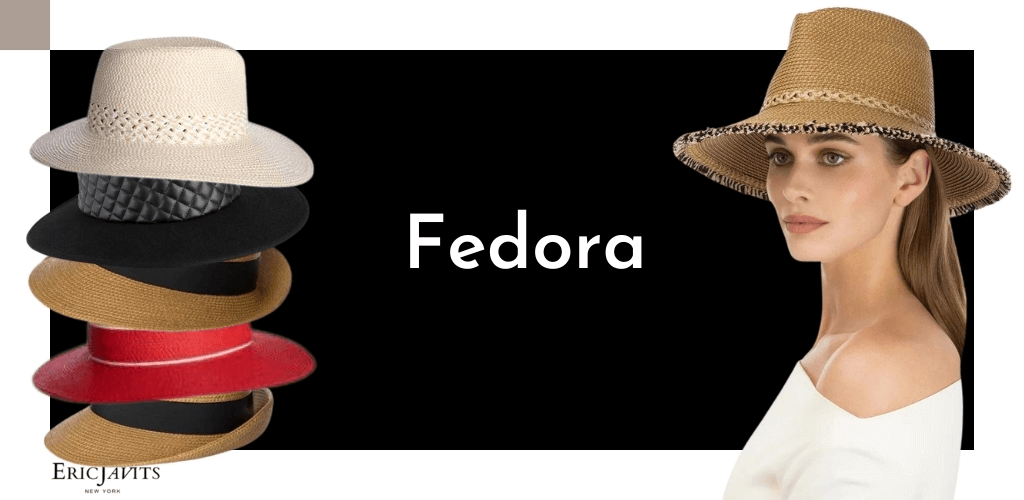Sustainable straw hat packaging is becoming increasingly significant in the fashion industry.
This trend emerges as consumers demand eco-friendly products and hat brands respond by adopting sustainable practices.
Importance of Sustainable Straw Hat Packaging
- Environmental Impact: Traditional packaging often contributes to plastic waste, while sustainable alternatives reduce carbon footprints.
- Natural Materials: Brands are turning to biodegradable materials, such as raffia and hemp, which decompose over time, aligning with the principles of sustainable fashion.
- Consumer Awareness: As awareness about environmental issues grows, consumers are more inclined to support brands that prioritize sustainability in both production and packaging.
The rise of these eco friendly practices in straw hat production and packaging is reshaping the industry landscape.
Notable hat brands like Eric Javits are leading the way toward a more sustainable future, making conscious choices that reflect a commitment to environmental stewardship.
This shift not only influences brand loyalty but also encourages a broader movement towards responsible consumption within the fashion sector.
The Shift Towards Sustainability in Straw Hat Packaging
The fashion industry is undergoing a significant change as more consumers demand eco-friendly products.
This shift has pushed straw hat brands to adopt sustainable practices, leading to a major transformation in how they produce and package their products.
Key trends influencing this transition include:
Rise of Sustainable Packaging Trends: Brands are moving away from traditional plastic packaging, which contributes to environmental degradation. Instead, they are opting for biodegradable materials that break down naturally over time, aligning with the values of environmentally conscious consumers.
Use of Natural Fibers: Natural straw materials such as raffia and hemp have gained popularity in straw hat production due to their sustainability. These natural fibers not only reduce reliance on synthetic materials but also minimize plastic waste, significantly lowering the environmental impact associated with fashion accessories.
The significance of these developments cannot be emphasized enough.
By incorporating biodegradable materials into their designs, fashion brands are supporting a circular economy where products can decompose without leaving harmful residues.
This approach resonates with consumers who prioritize sustainability in their purchasing decisions.
Furthermore, the emphasis on using natural fibers enhances the functionality of straw hats.
These materials are often lightweight and breathable, making them ideal for various outdoor activities while ensuring comfort during wear. The versatility of sustainable straw hats positions them as essential accessories for both urban settings and nature outings.
As consumers become more selective about their choices, the demand for sustainable packaging solutions will continue to grow.
Brands that embrace these changes not only meet market expectations but also promote a movement towards a more eco-conscious fashion industry.
Features That Make Sustainable Straw Hats Stand Out
Sustainable straw hats have unique qualities that set them apart from regular options.
Here are some key features:
1. Lightweight Nature
Made from natural materials like raffia and hemp, these hats feel incredibly light. This makes them comfortable to wear for long periods without any discomfort.
2. Breathability
Many sustainable straw hats have an open weave design that allows air to flow through, keeping the wearer cool in hot weather. This is especially important for outdoor activities such as hiking, going to the beach, or walking around the city.
3. UV Protection Properties
Many sustainable straw hats come with built-in UV sun protection, shielding the skin from harmful sun rays. This functionality is particularly important for eco-conscious individuals who prioritize health alongside style.
Versatility is another characteristic of sustainable straw hats. Whether you're going on outdoor adventures or navigating city life, these hats can be worn in various situations. Their stylish designs go well with casual outfits while also providing excellent sun protection.
In addition to practical benefits, wearing a sustainable straw hat shows your commitment to an eco-friendly lifestyle. It reflects your values and supports the larger movement towards sustainability in fashion.
As a fashionable accessory, it serves both purpose and style, making it an essential item for those embracing conscious consumerism.
Sustainable Straw Hats: Where Style Meets Eco-Friendly Living
Sustainable straw hats are more than just stylish accessories; they serve a practical purpose too. These hats not only shield you from the sun's rays but also elevate your fashion game, making them an essential part of any wardrobe upgrade.
With their distinctive designs and natural materials, sustainable straw hats embody a commitment to eco-friendliness while offering fashionable choices.
Why Choose Sustainable Straw Hats?
Here are some key reasons why sustainable straw hats are worth considering:
1. Versatility in Style
Available in various shapes and colors, sustainable straw hats can complement outfits for beach days, picnics, or urban outings. They offer endless styling possibilities.
2. Bold Fashion Statement
Wearing a sustainable straw hat signifies a conscious choice toward eco-friendliness. It showcases an individual's values and aligns with the growing trend of environmentally responsible fashion.
The Meaning Behind Choosing Sustainable Straw Hats
The decision to wear these hats goes beyond mere fashion. It represents a shift towards an environmentally conscious lifestyle, allowing wearers to express their commitment to sustainability through everyday choices.
This aligns with broader consumer attitudes favoring brands that prioritize eco-friendly practices, reinforcing the message that style and sustainability can coexist harmoniously.
The Growing Appeal of Sustainable Straw Hats
As more brands adopt sustainable practices in straw hat production and packaging, including the use of eco-friendly packaging, the allure of these fashionable accessories continues to grow.
Leading Brands Paving the Way for Sustainable Straw Hat Packaging
Several brands are leading the way in incorporating sustainability into straw hat production and packaging. These companies are committed not only to creating stylish designs but also to implementing environmentally friendly practices.
Notable Brands
1. Connor Handmade Hats
- Focuses on using biodegradable materials in their straw hats, such as natural raffia and hemp.
- Implements eco-friendly packaging solutions, minimizing plastic and opting for recyclable alternatives.
- Engages in initiatives that promote local artisanship, reducing carbon footprints associated with transportation.
2. Brixton
- Strives to reduce its environmental impact through sustainable sourcing of raw materials.
- Offers a range of hats made from organic cotton and other eco-friendly fibers.
- Uses minimal and compostable packaging that aligns with their mission to protect the planet.
3. Gigi Pip
- Committed to creating a circular economy by designing hats that are durable and long-lasting.
- Introduces biodegradable packaging options, ensuring that every product shipped contributes less waste to landfills.
- Advocates for transparency in production processes, allowing customers to understand the lifecycle of their products.
4.Eric Javits
- Prioritizes the use of cruelty-free and sustainable materials, such as Squishee®, a proprietary material designed to offer both durability and eco-consciousness.
- Introduces sustainable packaging solutions, reducing the reliance on single-use plastics and using recyclable materials.
- Continually innovates in product design and development to support both luxury fashion and sustainability.
Initiatives Taking Shape
These brands share a common goal: to minimize their environmental footprint throughout the entire lifecycle of their products.
Specific initiatives include:
- Material Innovation: Adopting natural fibers that break down over time reduces reliance on synthetic materials.
- Sustainable Manufacturing: Implementing practices that prioritize energy efficiency and water conservation during production.
- Consumer Education: Actively promoting awareness about sustainable choices among consumers through campaigns and storytelling.
As these brands continue to innovate, they set an inspiring example for others in the fashion industry.
Their collective efforts reflect a growing movement towards responsible consumption, making sustainable straw hats not only a fashionable choice but also an ethical one.
Innovations Changing Sustainable Packaging Solutions in the Fashion Industry
The fashion industry is making a significant shift towards sustainable practices, with paper straw hats becoming a popular choice.
These hats offer several advantages due to their recyclable materials, making them an appealing alternative to traditional straw options.
Key Benefits of Paper Straw Hats:
- Recyclability: Paper straw hats are made from materials that can be easily recycled, reducing waste and promoting a circular economy.
- Lightweight and Comfortable: These hats maintain comfort while providing protection against UV rays, making them ideal for outdoor activities.
Innovative packaging solutions are also gaining popularity among eco-conscious brands.
Many companies are exploring new ways to package their products that minimize environmental impact.
Notable innovations include:
- Biodegradable Packaging: Brands are investing in materials made from natural fibers or plant-based substances that break down more easily than conventional plastics.
- Minimalist Packaging Designs: Simplified packaging reduces material use and waste, emphasizing sustainability without compromising on aesthetic appeal.
- Reusable Packaging Options: Some brands are introducing containers designed for multiple uses, encouraging consumers to find new purposes for the packaging after purchase.
These advancements show a growing commitment within the fashion sector to address environmental concerns while maintaining style and functionality.
The integration of recyclable materials into both product design and packaging represents a critical step toward a more sustainable future in fashion accessories.
The Future of Sustainable Packaging in Fashion Accessories: Challenges and Opportunities Ahead
The journey towards sustainable packaging in the fashion accessory sector encounters various challenges that brands must navigate.
Key roadblocks include:
Cost Implications: Transitioning to eco-friendly materials often comes with higher production costs, which can deter smaller brands from making the switch.
Supply Chain Limitations: Sourcing sustainable materials may be limited in availability, affecting consistency and scalability for brands looking to expand their eco-friendly offerings.
Consumer Awareness: Many consumers remain unaware of the benefits associated with sustainable packaging, leading to hesitance in switching from traditional products.
Despite these challenges, significant opportunities exist within the realm of eco-friendly fashion accessories.
Notable avenues for growth include:
- Collaborative Efforts: Partnerships among brands, suppliers, and NGOs are fostering innovation in material development and sharing best practices in sustainability.
- Technological Advancements: Investment in research and development is leading to breakthroughs in biodegradable materials and recycling processes, enhancing product lifecycle management.
- Consumer Engagement: Growing interest in sustainability is prompting brands to educate consumers on the environmental impact of their purchasing choices, creating a demand for transparent practices.
As brands embrace these opportunities while addressing challenges, the landscape of sustainable straw hat packaging will evolve.
This shift aligns with broader environmental goals, enabling a more adaptive industry that prioritizes sustainability across all product categories.
Embracing a Greener Tomorrow with Recyclable Packaging
The commitment to sustainability extends beyond brands; consumers play a vital role in shaping the future.
Supporting eco-friendly brands involves more than purchasing decisions.
- Consider these actions:
- Advocate for sustainable practices within the fashion industry.
- Share information about brands prioritizing sustainability on social media platforms.
- Engage in conversations about the importance of eco-friendly packaging.
As consumers demand greater transparency and accountability, brands are encouraged to innovate. This movement fosters systemic change, pushing the industry towards more responsible practices.
By embracing sustainable packaging, individuals not only enhance their wardrobe but also contribute to a larger mission of environmental stewardship.
Each choice reflects a commitment to preserving our planet, making a powerful statement about priorities in fashion and lifestyle choices.
Conclusion
The rise of sustainable hat packaging reflects a broader shift in the fashion industry towards eco-conscious practices.
Key significant advantage:
- Consumer Influence: Growing demand for eco-friendly products has prompted brands to prioritize sustainability in both production and packaging.
- Material Innovation: Use of biodegradable materials such as raffia, hemp, and even paper is becoming commonplace, significantly reducing plastic waste.
- Brand Leadership: Companies like Eric Javits, Connor Handmade Hats, Brixton, and Gigi Pip exemplify how dedication to sustainability can resonate with consumers while enhancing brand identity.
Adopting sustainable practices not only benefits the environment but also aligns with the values of a conscientious consumer base. The potential for innovation within this sector remains vast, opening doors for new materials and packaging solutions that minimize waste.
Supporting brands committed to sustainability fosters a more significant movement towards responsible consumption. As eco-friendly practices gain traction, they pave the way for a fashion industry that prioritizes both style and environmental integrity.
Embracing these changes contributes to a greener future, ensuring that choices made today reflect a commitment to preserving our planet for generations to come.
























